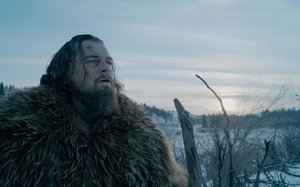
While much of The Revenant’s plot focuses on the quarrels of men and the seeking of revenge, the bear attack scene makes us forget this for a moment. González Iñárritu instead creates a scene that feels authentic using an undramatised style. In doing this he presents the bear not as a monster but as an animal defending its cubs when it feels threatened. There is no blame given to the bear during the scene or throughout the rest of the film, even though it causes Glass no end of troubles. The film is not centred around the bear, rather the bear is something the characters come across in the wild setting, the bear’s natural habitat.
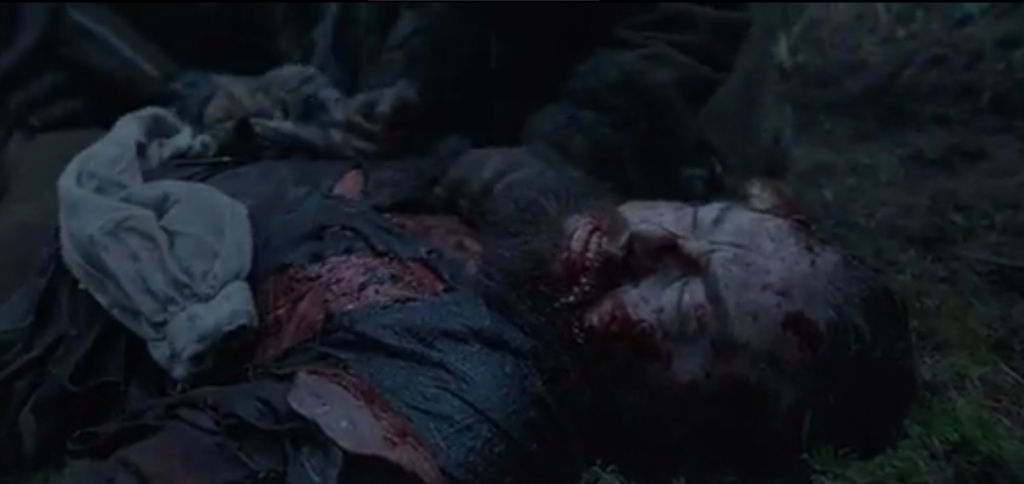
Bears will always defend their cubs, and we are powerless to stop it.
The Revenant resists the stylisation and drama that can be used to scare the audience. This is shown in the lack of dramatic music during the attack, and also by the noises the bear makes. Rather than multiple monstrous roars, the bear mainly growls and the main sound you can hear is it’s breathing. By not constantly using the scary roaring stereotype of a predatory animal, González Iñárritu portrays the bear’s sounds realistically, showing it acting how a bear acts. Rather than being a monster, the bear is just a bear defending its cubs from an intruder. It is not attacking Glass for being a human, just a threat, showing how insignificant humans are in the animal world and demonstrating the power of the bear when in its natural environment. The purpose of this scene is not to terrify us. Instead, it shows how a bear naturally behaves in the wild where it is the ruler.
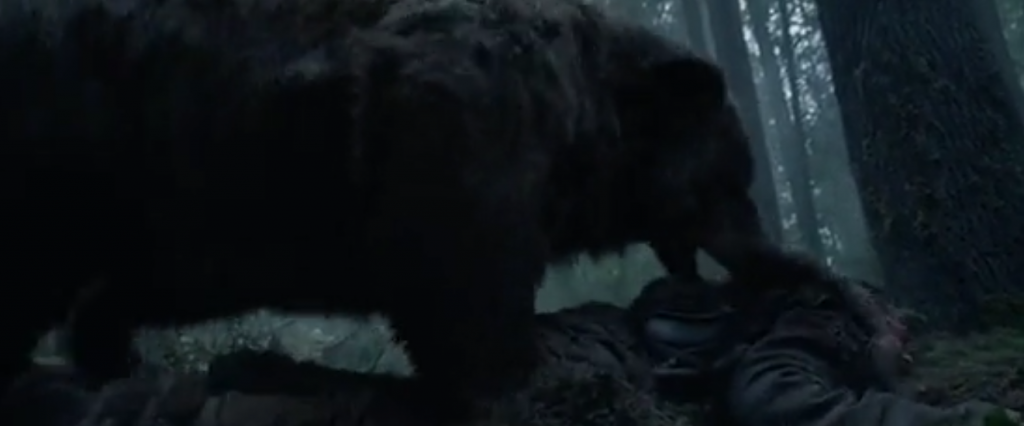
We cannot see what is happening to Glass
The authenticity of the scene is shown during the first moments of the attack. The bear initially blocks the audience from clearly seeing what is happening to Glass. By initially blocking the action, the film is refusing to glamourize the primal instincts of the bear and instead allows the scene to play out with what feels like little interference, as though it is raw, uncut and un-stylised footage.
This is also demonstrated in the lack of camera cuts during the three-minute scene. The attack is not overly dramatized, using multiple angles and cuts. Instead the camera is steady and portrays the action with what feels like little interference or stylisation. By not being over the top, it presents the bear acting how a bear would naturally act. During the entire three-minute bear attack there are only two camera cuts, one to place the camera next to Glass, looking at the bear, and the other placing the camera closer to the bear, looking at Glass. These cuts give both sides to the attack, showing the audience what both the predator and Glass, the prey, are seeing. By showing both perspectives, the film reinforces the idea that the attack is a natural occurrence and neither Glass nor the bear are to be blamed. The film doesn’t use hand-held, shaky filming to make the audience feel like they are Glass being attacked. Instead, the smooth filming simply accurately shows everything that happens.
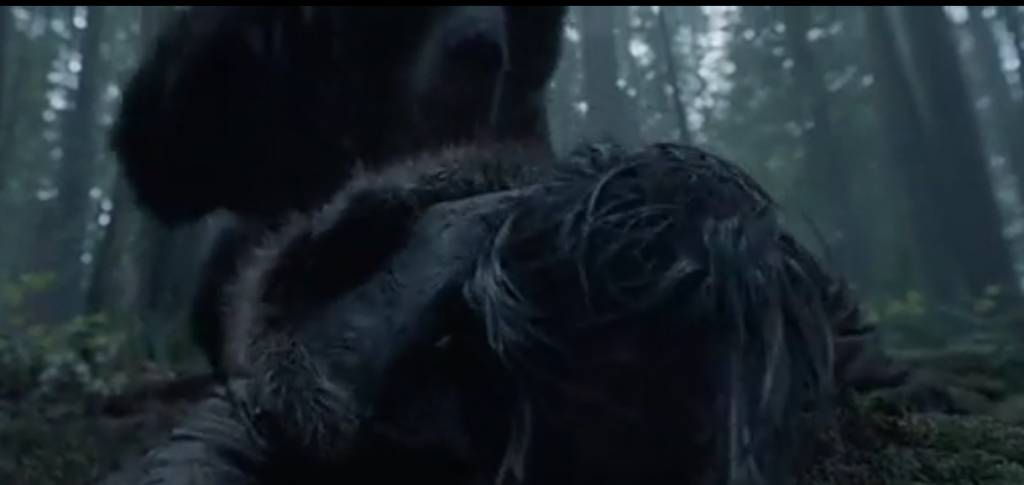
The bear looms over Glass and the camera
The film also uses close-up shots and a low camera angle to immerse the audience in the scene. After the initial moments of the attack, the bear swings Glass around and suddenly Glass’ head is right next to the camera. The camera remains low to the ground, with the bear looming over both Glass and the audience. By using these levels and making the bear higher than the camera, its dominance and power is reinforced. The scene repeatedly uses intense close-up shots leaving no room for the audience to look away and ignore Glass’ pain. Much of the film consists of panoramic views of the stunning scenery, yet here there is no panning away to spare us from Glass’ horror. Just as Glass is not spared from the attack, we are not spared from witnessing it.
Iñárritu simultaneously immerses the audience in the scene, but retains a boundary between them and Glass. Though we can see everything that is happening, we are not properly with him and can only observe what is happening, as bystanders. This increases our feelings of helplessness as we watch Glass be mauled and cannot do anything. It also emphasises the separation of the wild setting that they are in from the ‘civilised’ environment we are watching the film in. This realism helps to redraw the power relationships between humans and animals. It reminds the audience that there is an animal kingdom in which the bear is king.
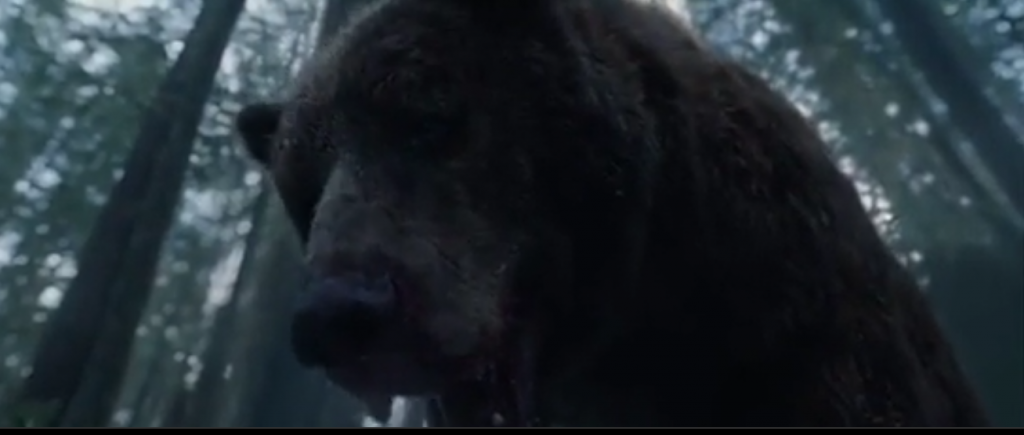
The bear might notice us at any moment
González Iñárritu plays with the authenticity and realism of the film, by allowing the audience to be close to the bear but also emphasising our separation from the action. In doing this he creates a strange feeling that the camera is at times too close, and there is almost a dread that the bear will see the camera – and the audience – because it feels so real. The realism of the scene suddenly breaks the fourth wall as the bear looms over the camera and it’s breath steams up the lens. Throughout we have had a separation from the scene, immersed but not part of it. The breathing points out the vulnerability of the camera and the audience being so close, and for a moment there is a slight fear that the realism will break into our world, and the camera could be smashed. There is no distance left between us and the bear. By merging our worlds for a second, it is as though Iñárritu is shaking us up, pointing out how the bear has the power here, and we have to let it do whatever it wants.
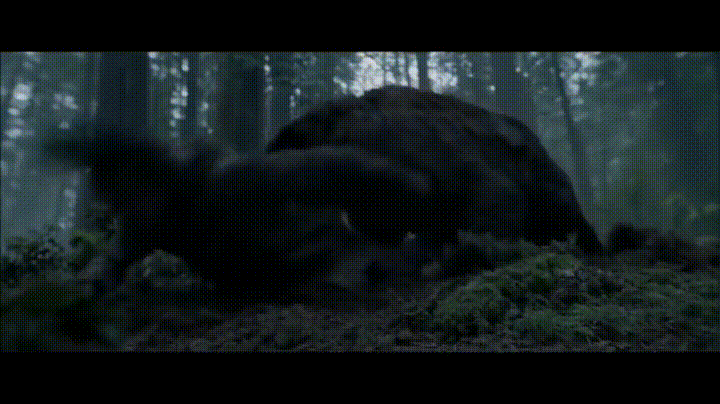
The scene shakes up the audience like the bear shakes up Glass
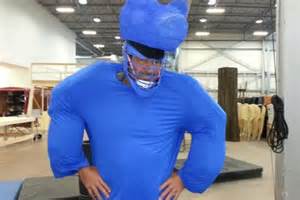
Just as terrifying as an actual bear.